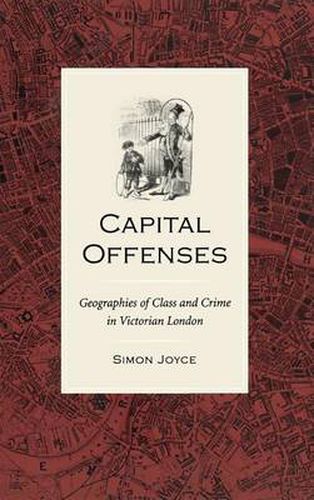Readings Newsletter
Become a Readings Member to make your shopping experience even easier.
Sign in or sign up for free!
You’re not far away from qualifying for FREE standard shipping within Australia
You’ve qualified for FREE standard shipping within Australia
The cart is loading…






As London became the first major city of the 19th century, new models of representation emerged in the journalism, poetry, fiction and social commentary of the period. Simon Joyce argues that such writing reflected a persistant worry about the problem of crime but was never able to contain it. Such commentators as Wordsworth, Dickens, Mayhew, Stevenson, Conan Doyle, Booth and Wilde all struggled with the same questions about how to represent London and the relations among its varied populations, yet their accounts often undermined one another. Whereas Victorian social science presumed a correlation between criminal activity, geographical residence and social class, the popular literature of the period often sought just as strenuously to deny the link, giving rise to privileged and pathological offenders like Dorian Gray and Dr Jekyll. This is turn shifted attention away from the urban slums that had been the setting for the so-called Newgate novels of the 1830s and 1840s. By 1900, crime appears as a distinctively modern problem, requiring large-scale solutions and government intervention in place of an older approach that was rooted in personal morality or philanthropic paternalism. Illustrating
literary geography
- in which physical space is not merely a backdrop for the plot but an integral element in shaping textual meaning - this work reveals how certain geographical patterns can not only give weight to interpretive meanings already suggested in the texts but also enable us to read them in a new and surprising light.
$9.00 standard shipping within Australia
FREE standard shipping within Australia for orders over $100.00
Express & International shipping calculated at checkout
As London became the first major city of the 19th century, new models of representation emerged in the journalism, poetry, fiction and social commentary of the period. Simon Joyce argues that such writing reflected a persistant worry about the problem of crime but was never able to contain it. Such commentators as Wordsworth, Dickens, Mayhew, Stevenson, Conan Doyle, Booth and Wilde all struggled with the same questions about how to represent London and the relations among its varied populations, yet their accounts often undermined one another. Whereas Victorian social science presumed a correlation between criminal activity, geographical residence and social class, the popular literature of the period often sought just as strenuously to deny the link, giving rise to privileged and pathological offenders like Dorian Gray and Dr Jekyll. This is turn shifted attention away from the urban slums that had been the setting for the so-called Newgate novels of the 1830s and 1840s. By 1900, crime appears as a distinctively modern problem, requiring large-scale solutions and government intervention in place of an older approach that was rooted in personal morality or philanthropic paternalism. Illustrating
literary geography
- in which physical space is not merely a backdrop for the plot but an integral element in shaping textual meaning - this work reveals how certain geographical patterns can not only give weight to interpretive meanings already suggested in the texts but also enable us to read them in a new and surprising light.